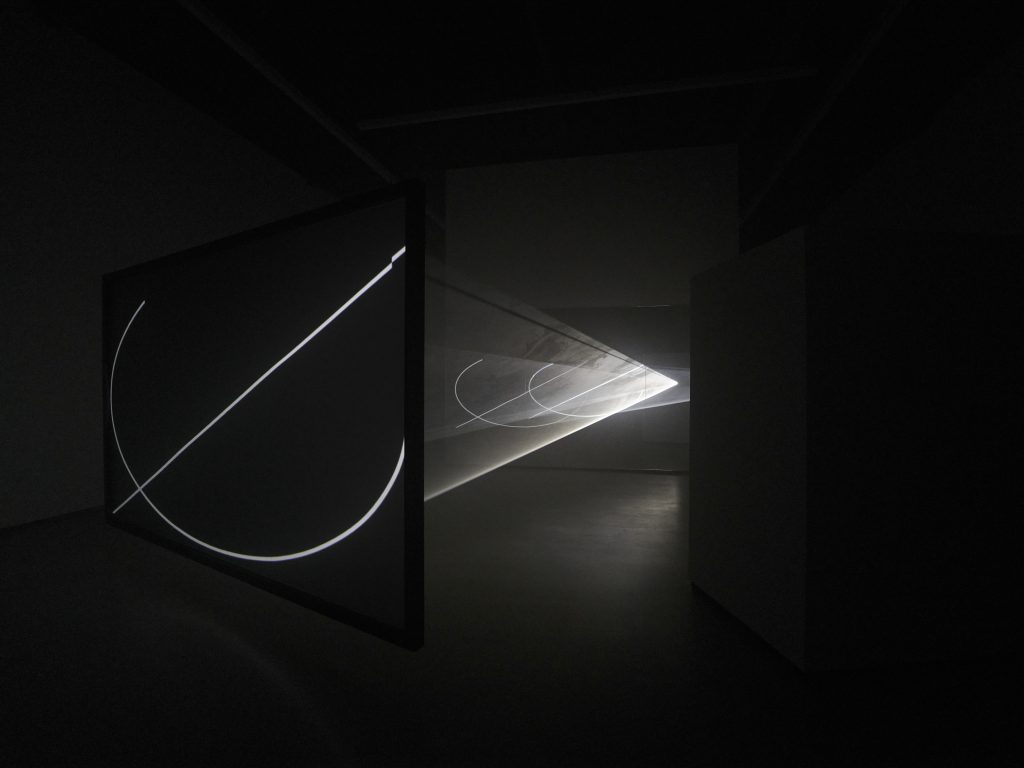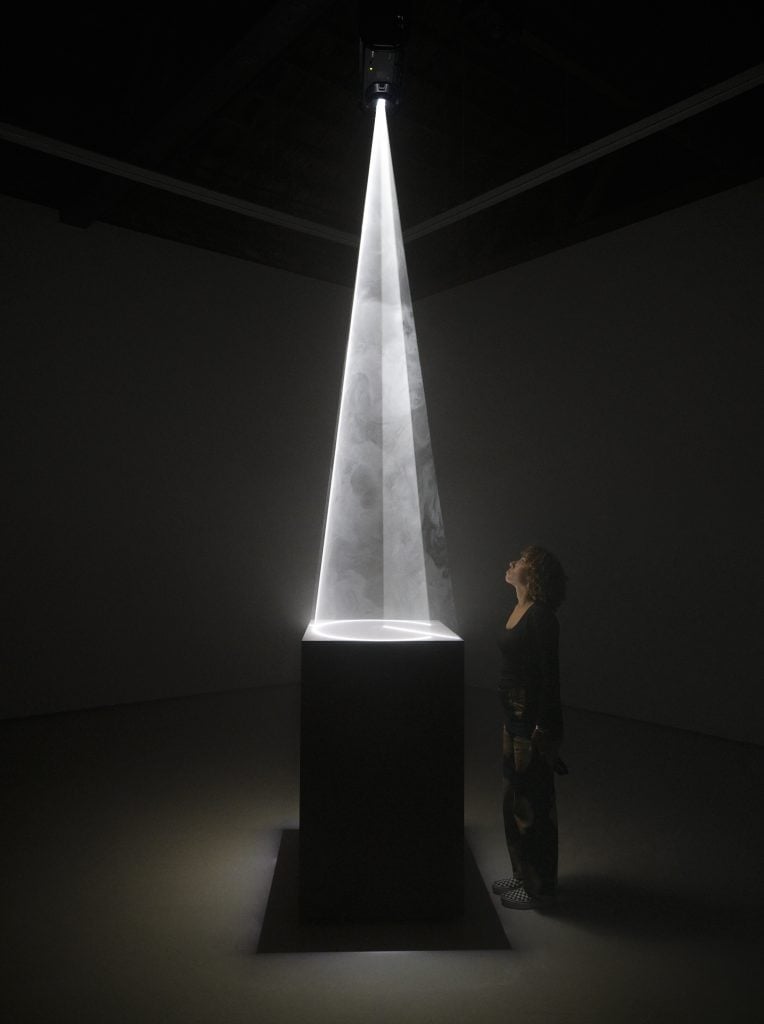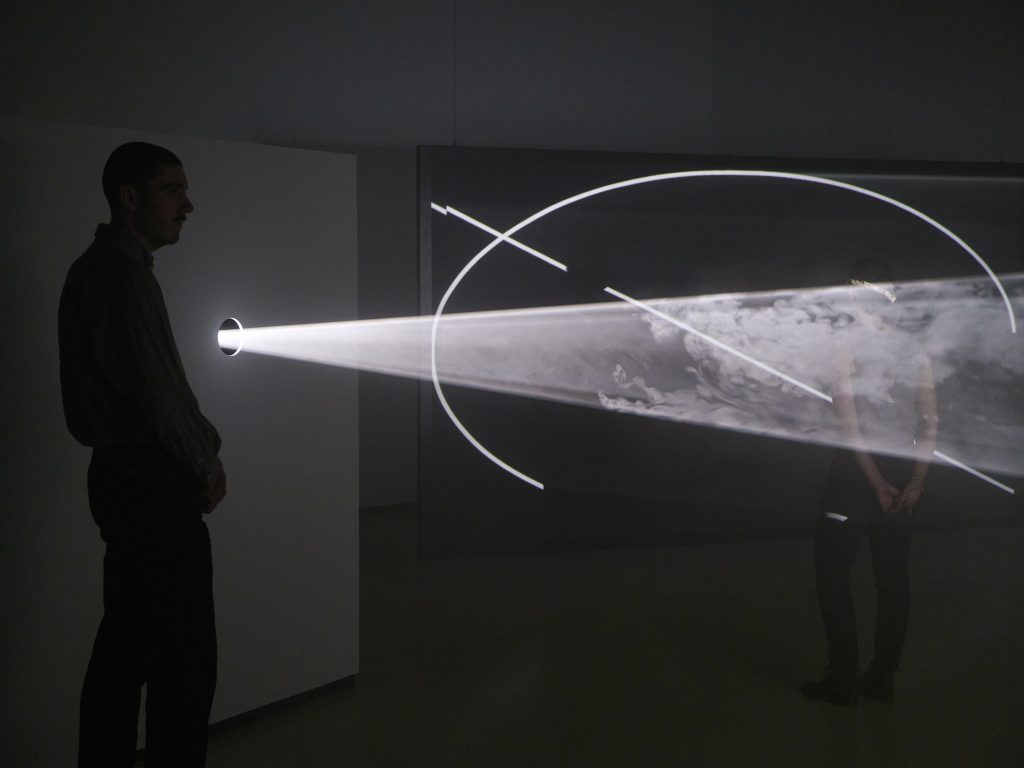Originally from England, artist based in New York Anthony McCall (b. 1946) is best known for his “solid light” installations, which synthesize elements of sculpture, drawing and film.
His solid light series started with Light describing a cone in 1973, where a projector was used to create a cone of light that visitors could move through. The work grew out of McCall’s performance work and film experience, notably with the avant-garde London group The Film-makers’ Co-operative. Following advances in projection in the 1990s, McCall was able to create more complex light installations that involved multiple projectors and used more complex shapes and forms of light.
Until August 25, 2023, Sean Kelly in Los Angeles presents an exhibition of McCall’s work, “New Solid Light Works and First Drawingswhich is the artist’s first personal exhibition in the city. The immersive exhibition features several of McCall’s signature light works, highlighting the evolution of his work with “solid light”, as well as a collection of photographs and preparatory drawings from across his career that illustrate the trajectory of his artistic practice.
We recently spoke with McCall to find out more about what goes into making a strong piece and where he sees his practice taking him next.

Installation view of “Anthony McCall: New Solid Light Works and Early Drawings” (2023). Photo: Brica Wilcox. Courtesy of Sean Kelly, Los Angeles.
Your exhibition with Sean Kelly opened this month. What do you hope the viewing experience will be for visitors?
I hope the visual experience is absorbing enough for the viewer to lose track of time.
Can you tell us a bit more about your creative process in creating “solid-light” works? Where to start, what is the most important tool in your studio?
Ideas for a work can take the form of an installation sketch, a diagram, a duration score, or even a set of measures. Some of these ideas develop as modifications of existing finished parts, others appear quite unexpectedly out of the blue. Either way, the best ideas are the ones that come to life on their own. The most important tool in the studio is pencil and paper: fast and precise, or as slow and extensive as needed at the time.

Anthony McCall, skylight (2020). Photo: Brica Wilcox. Courtesy of Sean Kelly, Los Angeles.
Included in the show is skylight (2020), which is accompanied by a sound element by David Grubbs. What prompted this type of sensory addition? What happened in the collaboration with Grubbs?
Sound has played a role in my work since the early 1970s, although over the past twelve years it has become more central. The turning point probably came in the mid-2000s when David Grubbs and I developed Leave with two minutes of silence. In its final version, the important role played by sound was to silence itself at specific times in its cycle. David and I continued to work together. One of our most recent collaborations was skylightwhich combines a vertically oriented conical shape with the sounds of a distant thunderstorm.
Do you see drawing as a simple extension of your solid-light work, or also as an independent part of your practice?
At each stage of development, solid-light work and my drawing practices support each other. You can’t have one without the other. Even when a finished work is exhibited, a line drawing will be at the center of the projected installation: the white line projected in two dimensions is the origin of the three-dimensional form in space.

Anthony McCall, Four projected movements (1975). Courtesy of Sean Kelly, Los Angeles.
The advancement of technology, particularly the advent of digital projectors, has profoundly affected the creation of solid light works. Have you come across or are you anticipating an even newer technology that you could incorporate into your practice?
I suppose I should take a look over my shoulder from time to time at how great images can now be created either by using ever more powerful lens projectors or by wall-scale LED grids. But when it comes to technology in general, I remain both receptive and skeptical.
Where do you most often look for inspiration?
Surely there is no need to look for inspiration! if inspiration is needed, it will find you soon enough.
Can you tell us what you are currently working on? Are there any ideas you want to explore that you don’t have yet?
I hover in two different directions: one incorporating sound, as discussed above, the other complicating an installation by interrupting the beam with a tilted mirror – for example, the 2020 Split Second Mirror (III) on the Sean Kelly show.

Installation view of “Anthony McCall: New Solid Light Works and Early Drawings” (2023). Photo: Brica Wilcox. Courtesy of Sean Kelly, Los Angeles.
“Anthony McCall: New Solid Light Works and First Drawingsis on view at Sean Kelly, Los Angeles through August 25, 2023.
Follow Artnet News on Facebook:
Want to stay one step ahead of the art world? Subscribe to our newsletter to receive breaking news, revealing interviews and incisive reviews that move the conversation forward.
